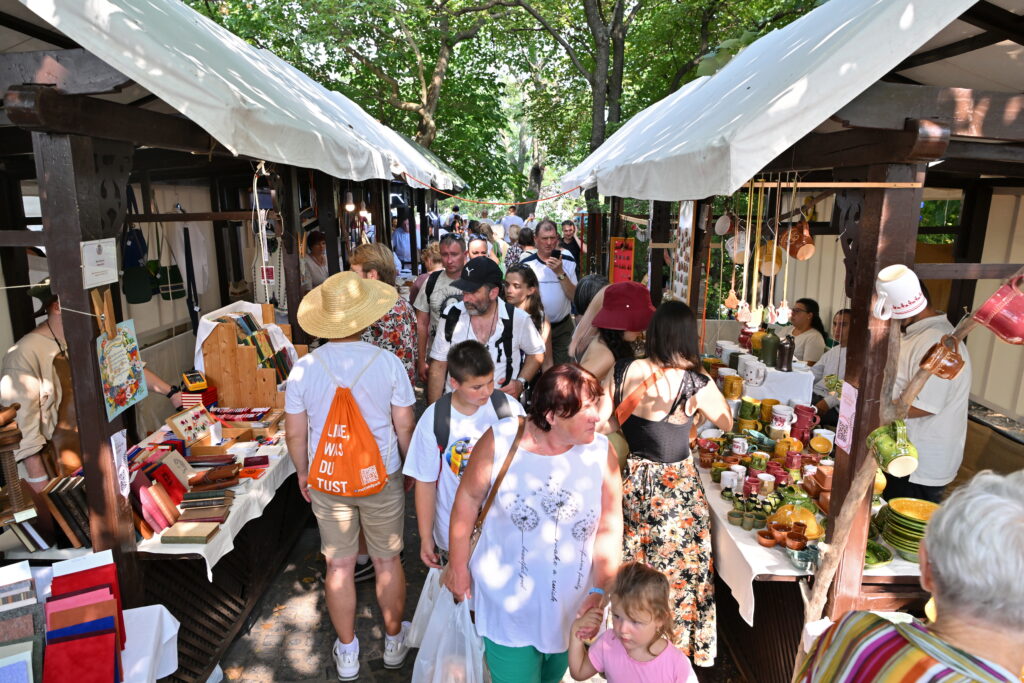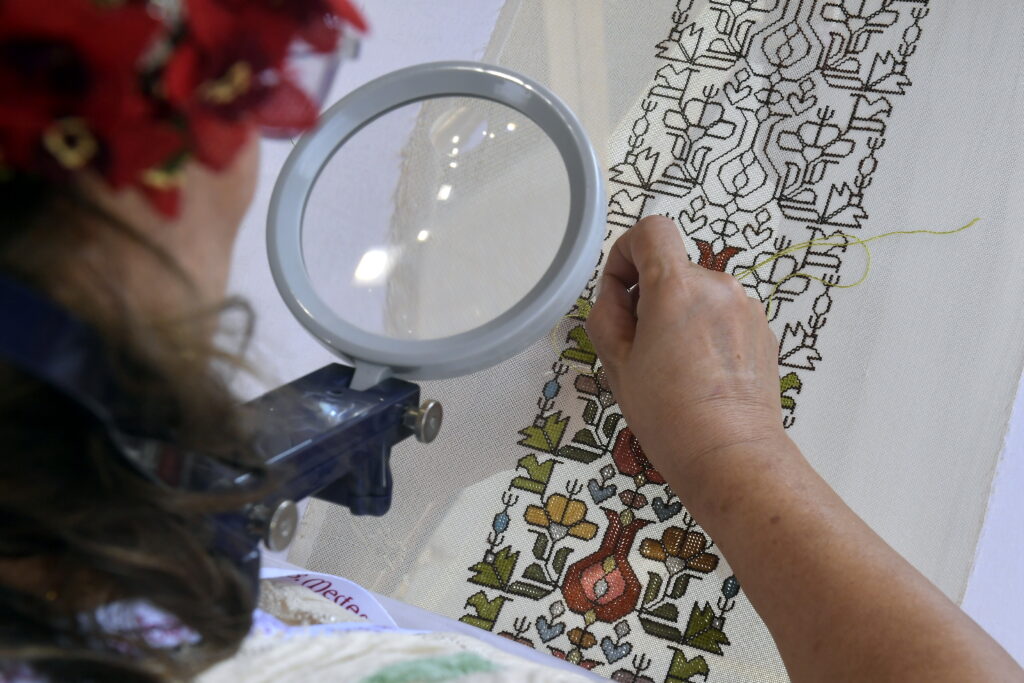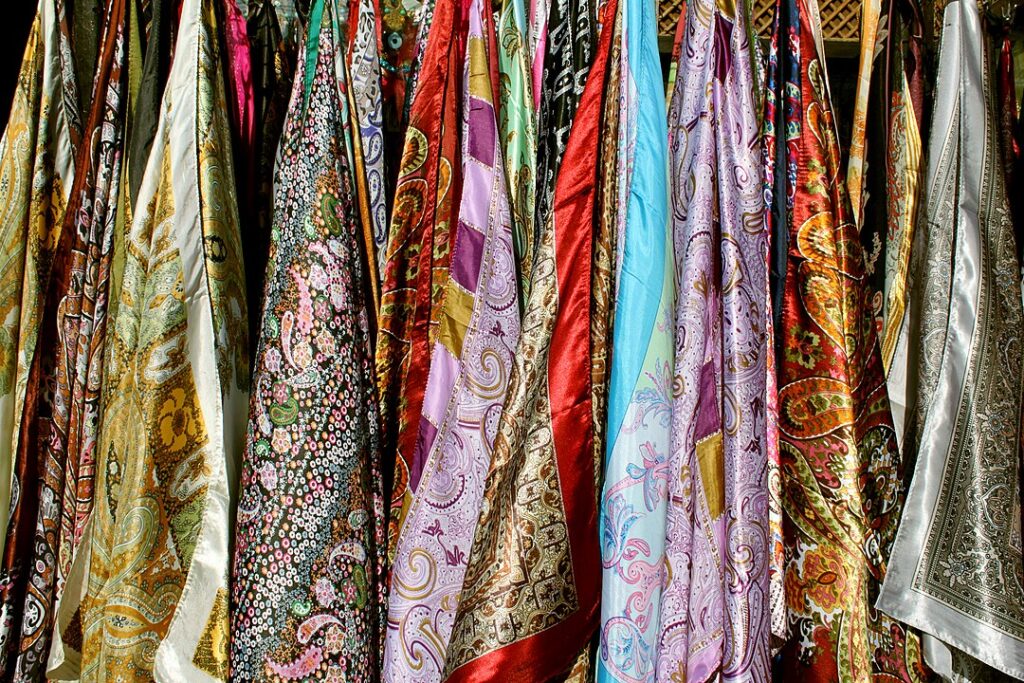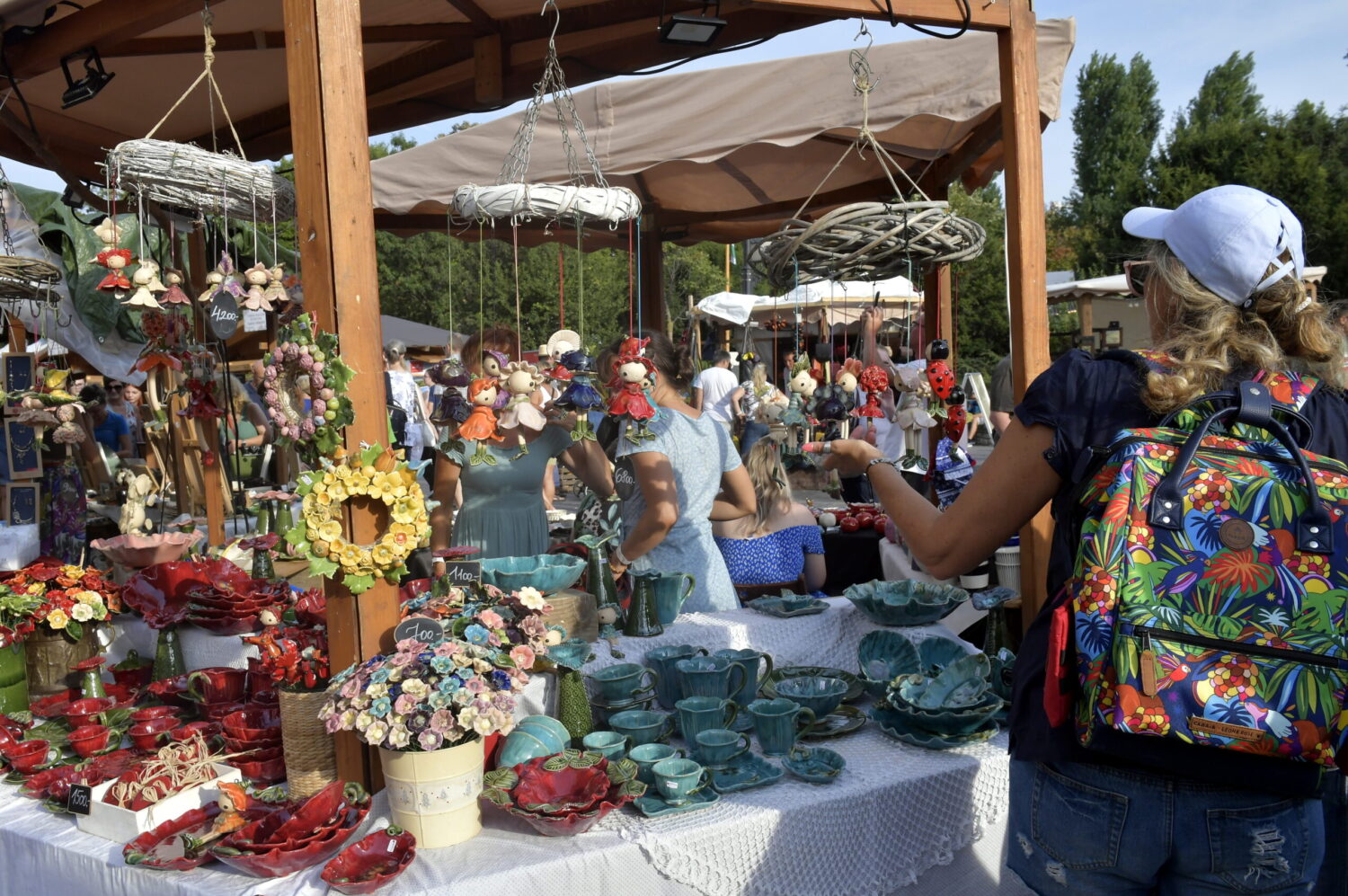Between August 17 and 20, Hungary’s largest folk art festival, the Festival of Folk Arts, will be held in the civic area of Buda Castle, with Azerbaijan as the guest of honor. This year, the event will focus on folk jewelry and traditional dress.
At the 39th Festival of Folk Arts in Buda Castle—stretching from Táncsics Mihály Street to Szentháromság Square, along Tárnok Street and Tóth Árpád Promenade to Dísz Square—visitors will be able to view and purchase the works of approximately 1,000 Hungarian and international folk artists and craftspeople. They will also have the opportunity to try various crafts at around 100 live workshops, the event organizer Association of Hungarian Folk Artists (NESZ) revealed.

Last year’s event. Photo: MTI/Purger Tamás
For four days, the Budapest event will offer children’s programs, craft workshops, fashion shows, stage performances, and folk dance events.
The series of events also serves as the largest annual gathering of masters from the Carpathian Basin.
A unique feature of the festival is that visitors can explore ancient crafts in over 100 live demonstration workshops—including blacksmithing, embroidery, egg painting, cooperage, and weaving studios, the organizer emphasized.

Blacksmith at last year’s Festival of Folk Arts. Photo: MTI/Purger Tamás

Embroidery maker at last year’s Festival of Folk Arts. Photo: MTI/Soós Lajos
This year’s guest of honor will be Azerbaijan. The country will be represented by a kelaghayi maker and a takalduz embroidery master.
The kelaghayi is a traditional element of Azerbaijani folk dress—a square silk headscarf adorned with special patterns. Both its creation and the way it is worn have been included on UNESCO’s Representative List of the Intangible Cultural Heritage of Humanity. Takalduz is also of Azerbaijani origin, a tapestry-style decorative art technique embroidered with silk thread. Carpet weavers will also be present at the event.

Kelaghayi traditional Azerbaijani silk headscarves. Photo: Wikipedia
In addition to the guest country, masters from Uzbekistan, Kazakhstan, South Korea, Kyrgyzstan, Türkiye, and Poland will also enrich the program.
Visitors will be able to view South Korean calligraphy and learn about the centuries-old decorative technique najeonchilgi, made using mother-of-pearl inlay. From Kyrgyzstan, ethnographers and costume makers will demonstrate the making and application of the traditional Kyrgyz headpiece, the elechek, which also appears on UNESCO’s Representative List of the Intangible Cultural Heritage of Humanity.
The highlighted theme of the 39th Festival of Folk Arts is folk jewelry and dress, and related crafts can be explored in the demonstration workshops on Tárnok Street. For instance, apron gathering and men’s hat ornament making demonstrations will be available to interested visitors, the announcement reads.
At the “Jewels of Kalotaszeg” pavilion, the most colorful region of the Hungarian-speaking area will be presented, including recreations of interior details from Kalotaszeg homes, they wrote.
Concerts will also await visitors: Szilvia Bognár, Sarjú Band, Kerekes Band, and Dalinda, Pál István ‘Szalonna,’ Romengo & Mónika Lakatos, as well as the Fitos Dezső Ensemble will entertain audiences. This year, stage performances will also be enriched by dance groups from India, Mexico, Serbia, and Greece.
Those interested in fashion can discover folk-inspired, reimagined clothing as part of the FolkTREND fashion show.

